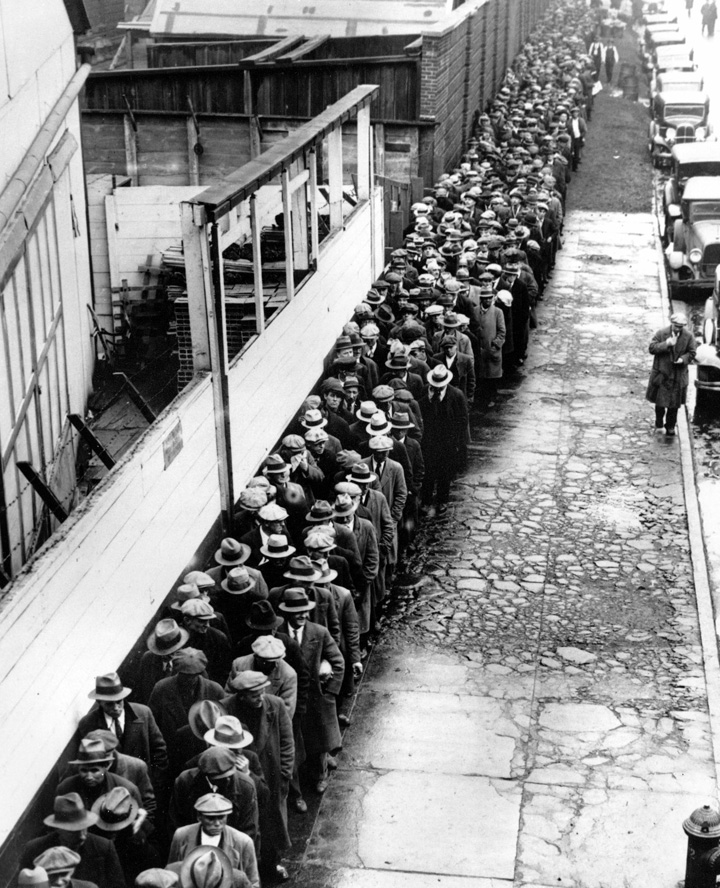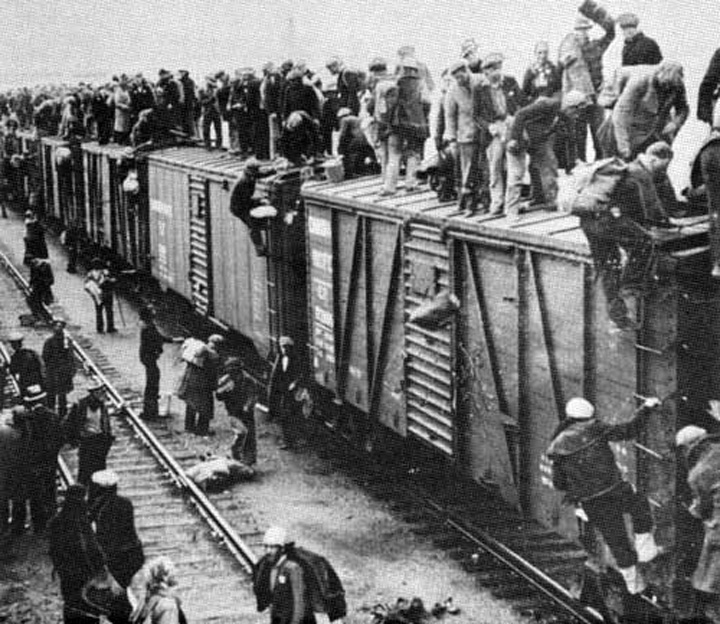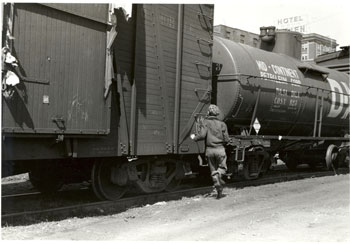 Drawing of hobo language examples  Job line during the Depression |  Hoboes and tramps, hitching a ride on a freight train  Teenage Hobo to get on the train |

A Hobo under a train
To support the family and decrease the financial burden, many teenagers left their home and hopped onto freight trains. They were called hoboes and they said they “ride the rails”. Sometimes, there were more penniless hoboes than people who paid money in the trains in 1932. Unfortunately, many of them were arrested and jailed since they couldn’t pay for the ticket. Dingbats referred to experienced hoboes and new hoboes were called gaycats. A lot of these people were crushed under the train wheels when they missed a jump. In several cities, they made a camp called jungle near the railroad tracks. They made shelters with cardboard boxes, branches, and abandoned stuffs. In the camp, they shared food and slept. People who had debts and couldn’t pay had to lose their homes and those were sold at auction. Furthermore, they had no money to rend the most rundown houses. People moved with relatives and built houses with shacks made from any materials they could find. Usually, the shacks were built near a town dump to make it easier to find food, clothes, and trash. They named themselves Hoovervilles because many people thought President Herbert Hoover didn’t try hard enough to solve the economic difficulties.
During the Great Depression, a lot of unemployed men moved Texas, to the town out West called El Paso. El Paso was very famous for the generosity of people to beggars. As aresult, El Paso became to be known as “easy mark” for them. The hoboes made a variety of signs that they used to communicate with each other. The restaurants in El Paso provided left-over food to organizations or homeless people.